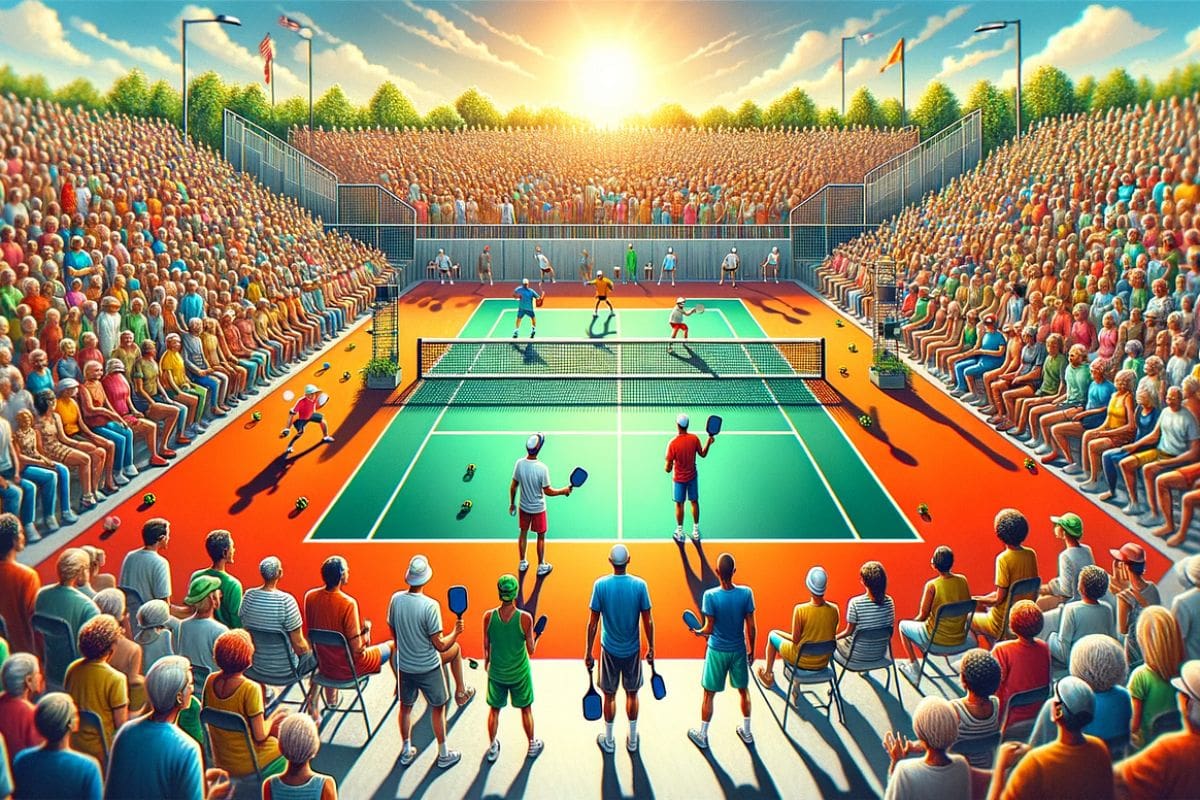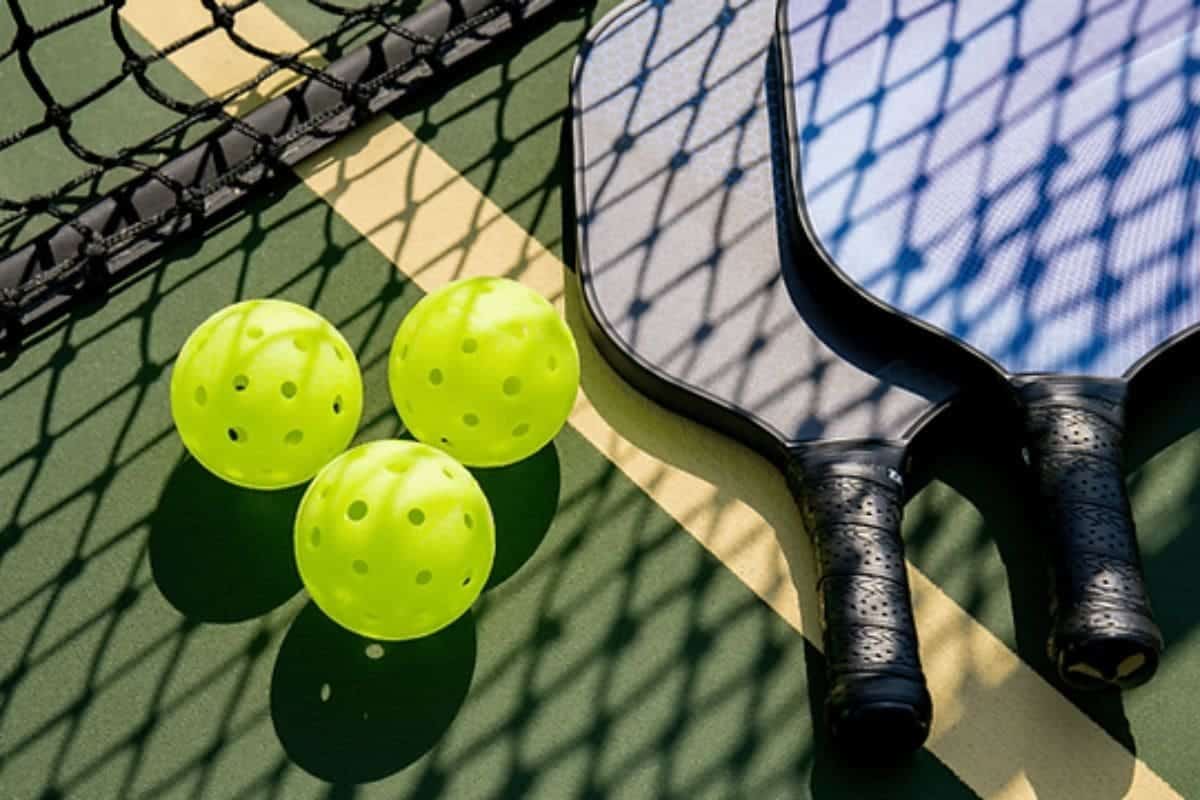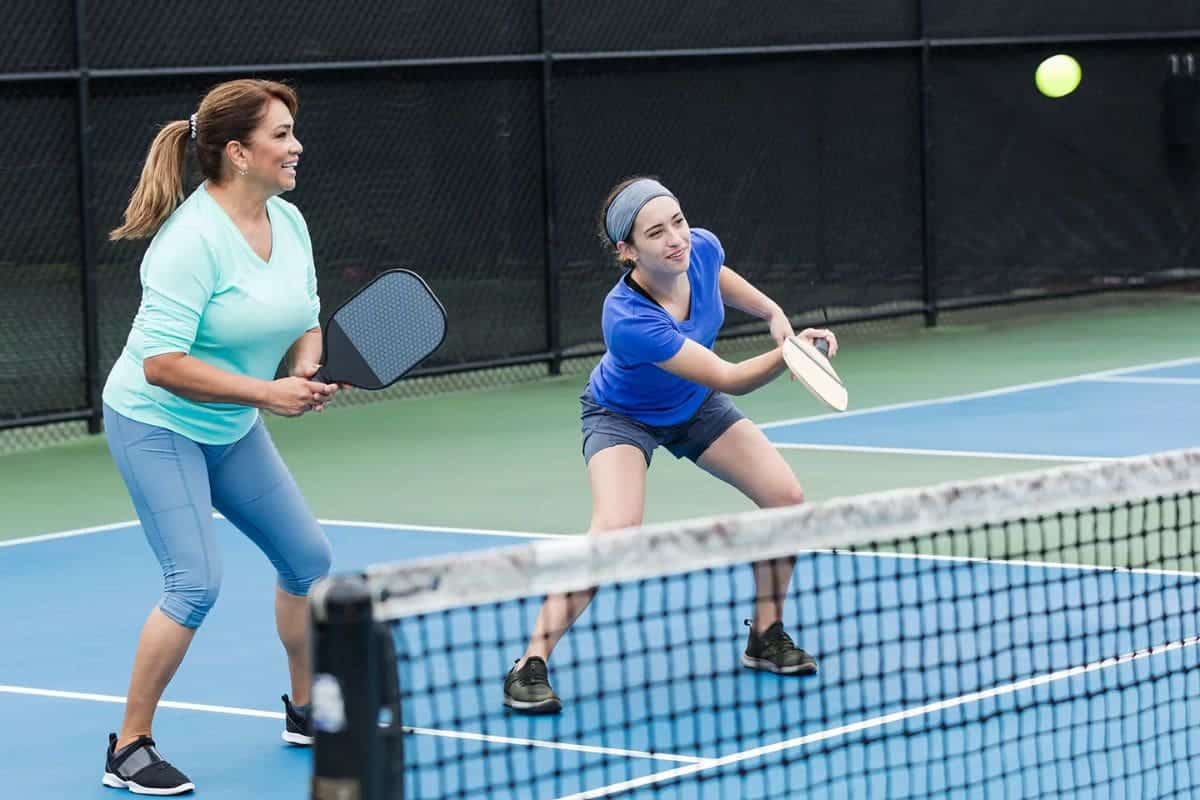The Rise of Pickleball: In the evolving landscape of recreational sports, pickleball has emerged as a phenomenon that bridges generational gaps and skill levels, seamlessly blending elements from tennis, badminton, and ping-pong. Its rapid ascent in popularity can be attributed to its simplicity and accessibility, combined with a unique lexicon that adds a layer of charm. Beyond the court, pickleball’s inclusive nature fosters a sense of community, encouraging participation from diverse age groups and abilities. As we investigate the effects of this burgeoning sport, one must ponder: what does the future hold for a game that seems to unite so effortlessly?
Key Highlights
- Pickleball combines tennis, badminton, and ping-pong, appealing to various ages and abilities due to its focus on strategy and skill.
- The sport’s low entry barriers, requiring minimal equipment, contribute to its widespread popularity and accessibility.
- Pickleball promotes physical health, mental well-being, and social connections, benefiting players of all ages.
- The pandemic surge and celebrity endorsements have significantly boosted pickleball’s visibility and mainstream acceptance.
- Community engagement and inclusive initiatives make pickleball a welcoming sport for diverse demographics.
Introduction and Popularity
What is it about pickleball that has captivated 36.5 million Americans and transformed it into the fastest growing sport in the country? The answer lies in its unique blend of simplicity, inclusivity, and competitive spirit. Originating in the mid-1960s, pickleball combines elements of tennis, badminton, and ping-pong, creating a game that is both accessible and engaging. Its appeal spans across generations, making it a sport where age and athletic skills take a backseat to strategy and ability.
The terminology of pickleball—dink, drill, the kitchen, Erne, Golden Pickle—reflects its quirky yet endearing nature. These terms might sound foreign to the uninitiated, but they encapsulate the charm and specificity of a game that is easy to learn but challenging to master. Governing body USA Pickleball ensures that the sport maintains its integrity and fosters community engagement, contributing to its rapid expansion.
One of pickleball’s most significant attractions is its low barrier of entry. Unlike many sports that require expensive gear or extensive training, pickleball is remarkably straightforward to pick up. A basic set of paddles, a perforated plastic ball, and a flat surface are all you need to get started. This simplicity makes it an ideal choice for people of all ages and backgrounds, from young children to retirees.
Moreover, the sport’s design levels the playing field. You don’t have to be the tallest, fastest, or most athletic person to excel. Instead, strategy, coordination, and finesse often determine the victor, making pickleball a sport where almost anyone can compete and enjoy themselves. This inclusivity and democratization of athletic competition are key factors driving its soaring popularity.

Personal Stories and Social Impact
Gonzales’ story exemplifies how pickleball transcends mere recreation, shaping lives and communities in meaningful ways. Her experience is emblematic of the sport’s ability to inspire dedication, foster health, and galvanize social initiatives.
Gonzales’ tale highlights the profound social impact and individual dedication fueling the sport’s growth. Gonzales’ adventure with pickleball began in her middle school physical education classes in the 1980s. Decades later, the pandemic reignited her passion for the sport, leading her to set up a court at home. Her enthusiasm quickly escalated to an obsession: ‘I just loved it. The initial day we got our own net, my son and I played five hours straight,’ she recalls.
Now a daily player at Lifetime Fitness, Gonzales’ commitment to pickleball extends beyond personal enjoyment. She has channeled her passion into broader contributions, designing a performance sports dress specifically for pickleball, available at the Love Her women’s athleisure shop in Sacramento. Portions of the proceeds from these sales benefit different nonprofits, reflecting the sport’s potential to foster not only physical well-being but also community support and philanthropy.
Gonzales emphasizes the cognitive benefits of pickleball, citing scientific evidence that sports can help mitigate the risks of dementia and Alzheimer’s. ‘It’s good for your brain. The power of sports has been scientifically proven to not only help you live longer but also fend off dementia and Alzheimer’s,’ she asserts. Her story highlights the multifaceted impact of pickleball, illustrating how it can serve as a conduit for mental health, social connection, and community engagement.
History and Growth of Pickleball
The story of pickleball’s rise from a backyard pastime invented by three Pacific Northwest fathers to a global phenomenon highlights its universal appeal and accessibility. The sport traces its origins to 1965, when Joel Pritchard, Bill Bell, and Barney McCallum sought to entertain their families. Utilizing ping-pong paddles, a wiffle ball, and an old badminton court, they created a game that combined elements of tennis and table tennis. Joan Pritchard, Joel’s wife, named the game pickleball, inspired by the ‘pickle boat’ in crew races, which refers to a boat filled with leftover rowers.
From these humble beginnings, pickleball has seen exponential growth. The sport’s simplicity and inclusivity have made it a favorite among diverse age groups and skill levels. As of today, there are nearly 12,000 locations across the United States where enthusiasts can engage in this dynamic sport, from casual park play to competitive tournaments.
The USA Pickleball Association, founded in 1984, has played a significant role in standardizing the game’s rules and promoting its growth. Today, pickleball’s reach extends well beyond American borders, with international tournaments drawing players from around the globe. The pandemic further boosted its popularity, as people sought safe, outdoor activities that allowed for social interaction and physical exercise.
The sport’s appeal has even caught the attention of superstar athletes like Tom Brady and LeBron James, who have invested in professional pickleball teams, further cementing its status as a mainstream sport. As pickleball continues to grow, its rich history and inclusive nature remain at the heart of its enduring success.

Media and Industry Influence
As pickleball’s popularity surged, media and industry influencers began to play an important role in its mainstream acceptance and cultural integration. One notable example is the publication of ‘Pickleball for Dummies,’ co-written by Carl and Diane Landau, along with their trainers Mo Nard and Reine Steel. This book serves as a detailed guide, simplifying the sport for newcomers while reinforcing its accessibility for all ages and abilities.
The Landaus, who co-founded Pickleball Media, have also brought further visibility to the sport through their podcast, ‘I Used to Be Somebody,‘ which integrates pickleball into broader discussions about post-retirement careers. The podcast, which features a popular segment called ‘Pickleball Life Lessons with Mo,’ has struck a chord with a wide audience. This five-minute feature not only provides practical tips and humorous anecdotes but also humanizes the sport, making it relatable and approachable.
“Mo is my pickleball instructor, and she is really funny,”
“Mostly she makes fun of what a bad pickleball player I am.” – Carl
Carl Landau’s personal story adds another layer of authenticity; his involvement in pickleball at the Rio Del Oro Spare Time Sports Club has not only improved his physical well-being but also expanded his social network. He and his fellow players form a tight-knit community, showing how pickleball fosters relationships that transcend the court.
“When I first joined Rio Del Oro, there were 15 of us who basically started playing pickleball at the same time, and I’m still friends with almost all of them,”
“We see each other outside of pickleball, and in some ways it’s really changed my life. These are people I would have never met in a million years if it wasn’t for pickleball.” – Carl
The influence of media and industry figures like the Landaus is vital in shaping public perception and engagement with pickleball. By blending educational content with personal narratives and humor, they have effectively made the sport more appealing to a broader audience. This strategic media engagement and industry support have been important in transforming pickleball from a niche activity into a burgeoning mainstream sport, celebrated for its inclusivity and community-building abilities.
Events and Future Developments
In the dynamic world of pickleball, events like the APP Sacramento Open at Johnson Ranch Sports Club are not only breaking participation records but also setting the stage for the sport’s promising future. Held in March, the tournament drew nearly 1,500 players from 39 states and six countries, cementing its status as the largest stop in the tour’s history. This surge in participation highlights pickleball’s growing appeal across diverse demographics, from novice players to seasoned athletes.
The competition saw standout performances, such as Red Bluff native Michael Thunder Shaffer and his partner Courtney Blaser, who clinched the gold medal in the mixed doubles, 19-plus, 4.5 skill level division. Their victory earned them a coveted golden ticket to the APP Nationals Tournament in Arizona, a sign of their skill and dedication. Events like these also have a significant economic impact; Placer Valley Tourism estimates that the tournament brought approximately $2.5 million to the local economy.
Beyond major tournaments, Johnson Ranch Sports Club fosters community engagement through initiatives like Friday Night Lights, an event that combines pickleball with entertainment, featuring a resident DJ. This event has evolved from being mainly attended by older adults to attracting a younger, college-age crowd, reflecting the sport’s widening appeal. Additionally, bi-monthly free instructional sessions draw 50-75 participants, providing accessible entry points for new players.
“It used to be populated by an older crowd, but in the last couple of years, I almost feel like it’s a college party.” – Martinez
The popularity of pickleball is also spurring growth in related industries. From specialized gear to apparel, companies are capitalizing on the sport’s rise. Retail giants like Target have introduced pickleball-specific clothing lines, and high-quality paddles can range from $35 to $200, indicating a robust market demand.

News in Brief: The Rise of Pickleball
The rise of pickleball, highlighted by its fusion of tennis, badminton, and ping-pong, emphasizes its appeal across diverse demographics. The sport’s accessibility and minimal equipment requirements have equalized athletic participation, nurturing a sense of community and inclusivity.
As media and industry influence further drive pickleball’s popularity, its growth trajectory appears strong. Future developments and events will likely continue to enrich its status, solidifying pickleball as a universally engaging and enduring sport.
Also Read: Introducing the APP UTR Sports Pickleball Leagues: A New Era of Competitive Play

